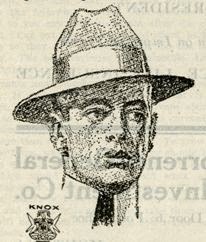by Maegen Cook, Digital Collections Assistant
While examining prisoner data to be uploaded to our digital collection,
Montana State Prison Records, I came across the following notation about prisoner John Harrington of Lewistown:
 |
| Detail from John Harrington's Montana State Prison intake sheet. |
That’s it.
This 1918 record intrigued me because it lacks the usual information on scars, religion, tobacco use, literacy, tattoos, education, etc. Based on this cheeky remark, I assumed Harrington was arrested for being drunk and disorderly, but I was wrong. He'd been convicted of sedition—a very serious offense.
The Sedition Act in Montana began in February 1918 and, during that time of world war, the statute criminalized almost anything said or wrote that seemed anti-American. The
Montana Sedition Project by the University of Montana details all the accused, totaling 76 men and 3 women arrested in 1918-19. It amazes me to think what kind of seemingly harmless statements could result in being arrested during that time of hyper-patriotism.
 |
1918 prison intake sheet for John Harrington, convicted of
sedition (RS197). |
I decided to see what Montana newspapers wrote about Harrington's crime. It turns out that his case was one of the very first sedition cases in Montana. In the
Lewistown Democrat News and
Fergus County Argus from April 1918, I discovered that Harrington was accused of calling the U.S. government “rotten” and stating that they had “no business in [the war]” and that he “hoped the German army would whip the American soldiers.” One reporter warned: The “Harrington case ought to be a lesson to everyone” not to speak against the U.S. Harrington served one year, then continued through his parole without further incident.
One of the biggest projects the MHS Research Center oversees is digitizing all 10,000
Montana State Prison intake sheets. These records typically contain a wealth of information about each prisoner—crime(s), age, date, address, parents' names, occupation, physical features, and more. Most records contain a photograph as well.
You never know what kind of cases you'll come across while looking through these records.






